The International Day of Zero Waste is observed annually on March 30th. 2025 marks the third annual observance since it was declared by UNEP. This year’s theme, “Towards Zero Waste in Fashion and Textiles,” focuses on sustainable consumption and production patterns and circular economies.
Keeping at par with this theme, the Centre for Advisory Counselling and Support Services (CACASS) looks at the environmental menace caused by used menstrual pads and diapers as a critical necessities to hygiene and clothing in the current age and how production, consumption and circularity concepts can blend into a sustainability loop.
Circularity in economy is all about ensuring sustainability through reducing, reusing and recycling resources, while also focusing on regenerating natural systems and designing out waste and pollution.
What can we do to minimise diaper and menstrual pad wastage?
Reduce: Minimising consumption and waste by designing products and processes that are efficient and durable.
Reuse: Designing products for extended lifespans for reuse.
Recycle: Transforming hygiene waste into new products and resources while ensuring that valuable materials are kept within the economic cycle.
Regenerate: Support the restoration and regeneration of the natural systems and resources used to create hygiene products.
Ecodesign: Focus on designing products and processes that are inherently sustainable, minimising environmental impact and promoting circularity from the outset.
Energy Efficiency: Prioritising energy efficiency in all production and consumption aspects to reduce reliance on finite resources and minimise pollution.
Eliminate Waste and Pollution: Design hygiene products and processes that aim for a closed-loop system and minimise waste and pollution from the beginning.
Maintain Material Value: Keep materials in use for as long as possible by designing for durability, recyclability, and the possibility of reuse.
There are different types of menstrual kits, such as synthetic pads, reusable pads, biodegradable pads, tampons, and menstrual caps. Each type is used based on availability, affordability, or trendy preference. There are two major types of diapers: disposable and reusable. As we make choices of available options, pertinent reminders we need to give ourselves is their conformity to the principles of circular economy.
“Environmental settings are struggling to manage massively produced disposable pads and diapers. Manufacturers, distributors, marketers, consumers, environmentalists, and policymakers, let us join hands to support the path towards a sustainable economy.” Sarah Akello, MBA – Director CACASS


